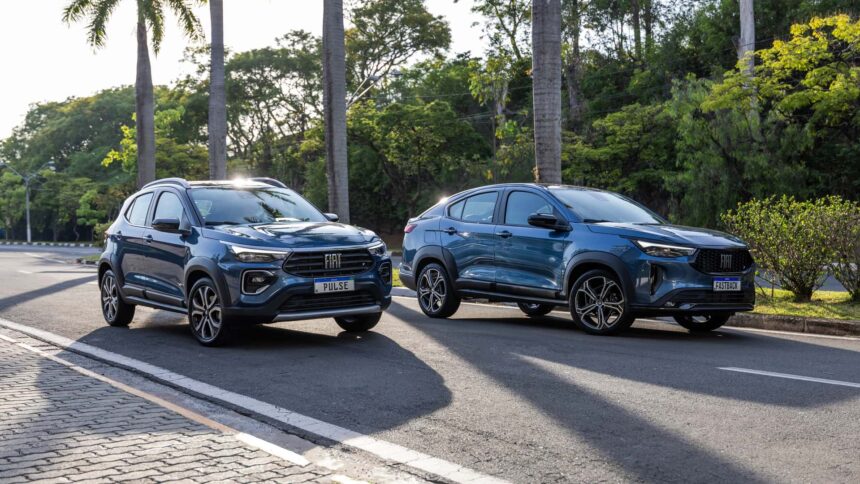Hybrids have been around since 1901, starting with the Loehner-Porsche “Mixte” developed by Ferdinand Porsche. However, it wasn’t until the 1990s that hybrids gained popularity, especially with the launch of the original Toyota Prius in 1997. While most hybrids have gas engines, some, like those from Mercedes, use diesels. Peugeot was the first to introduce a mass-produced diesel hybrid in 2012, and now Fiat is stepping into the game with an ethanol hybrid in Brazil.
The Stellantis brand is calling this technology a “bio-hybrid,” which centers around a turbocharged 1.0-liter engine. This three-cylinder engine runs on gasoline and ethanol, complemented by an electric motor. With 130 horsepower, the combustion engine may not seem powerful, but Fiat claims that the Fastback and Pulse are the most potent in their segment. These two SUVs, equipped with the T200 Hybrid powertrain, deliver 148 pound-feet of torque.
Power from the engine is sent to the front axle through a CVT that simulates seven gears. Fiat has equipped the Fastback and Pulse with two 12V batteries: a 68Ah lead-acid battery in the engine bay and an 11Ah lithium-ion battery under the driver’s seat. These batteries support a four-horsepower electric motor that replaces the traditional alternator and starter components.
One interesting feature is the regenerative mode, which can capture up to 25% of the energy lost during deceleration. This harvested energy is used to recharge both batteries, resulting in a claimed fuel consumption reduction of 11.5% for the Fastback and 10.7% for the Pulse compared to the non-electrified version of the ethanol-compatible engine.
The choice of ethanol as a fuel source is strategic, given Brazil’s position as the world’s second-largest producer. The country is a major sugarcane producer, which is used to make ethanol. Fiat has a history in Brazil, launching the 147 small hatchback compatible with E100 back in 1979. Last year, 83% of cars sold in Brazil had a flex-fuel powertrain, according to the Brazilian Association of Automotive Vehicle Manufacturers (ANFAVEA).
Looking ahead, Stellantis plans to introduce full hybrids with a dual-clutch automatic transmission and plug-in hybrids with combustion engines capable of running on ethanol. Competitors like General Motors and Honda have also revealed plans to launch ethanol-capable hybrid vehicles in Brazil.
In conclusion, Fiat’s foray into ethanol hybrids in Brazil marks an exciting development in the automotive industry. With a focus on sustainability and performance, these bio-hybrids offer a glimpse into the future of environmentally friendly transportation.




